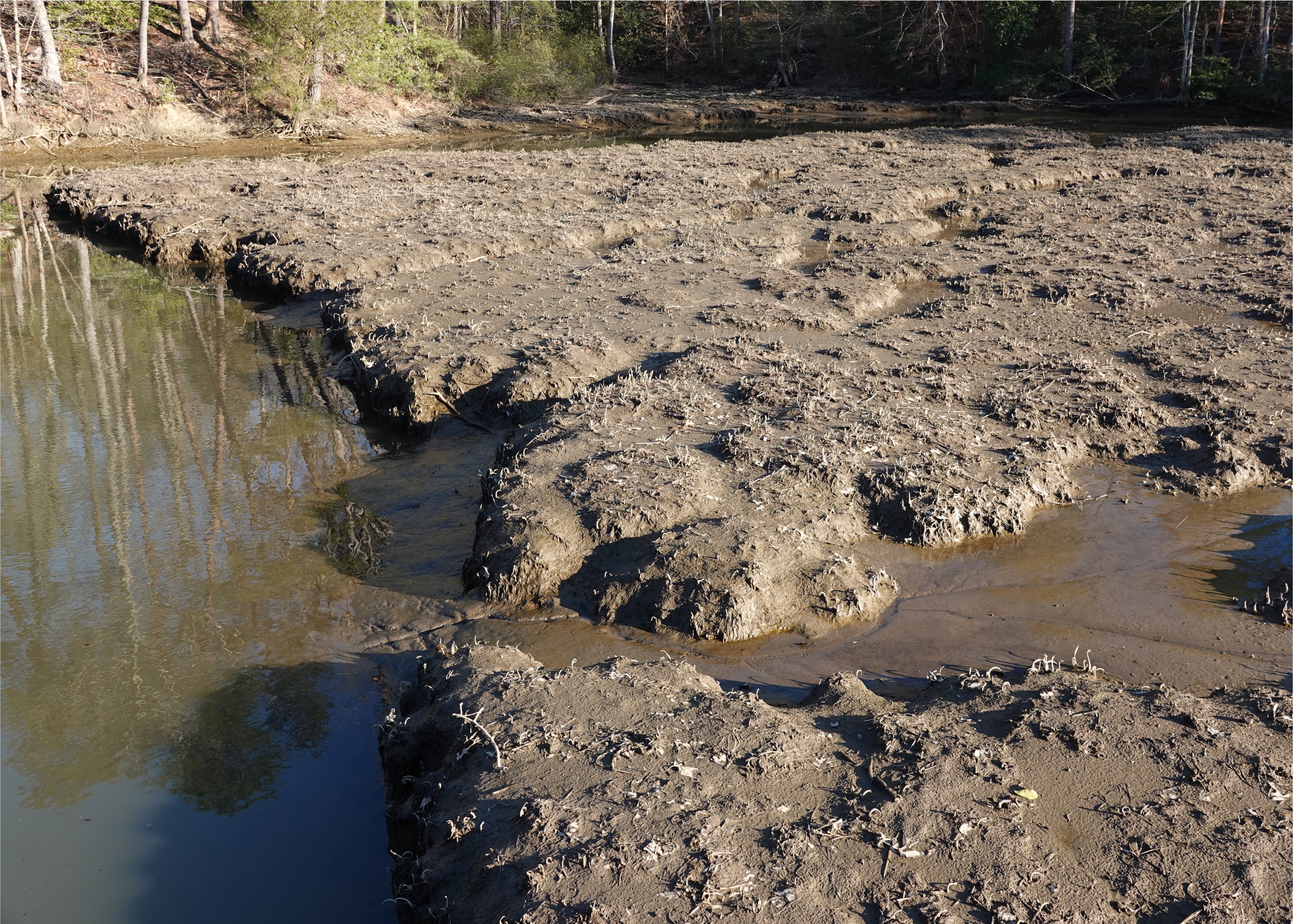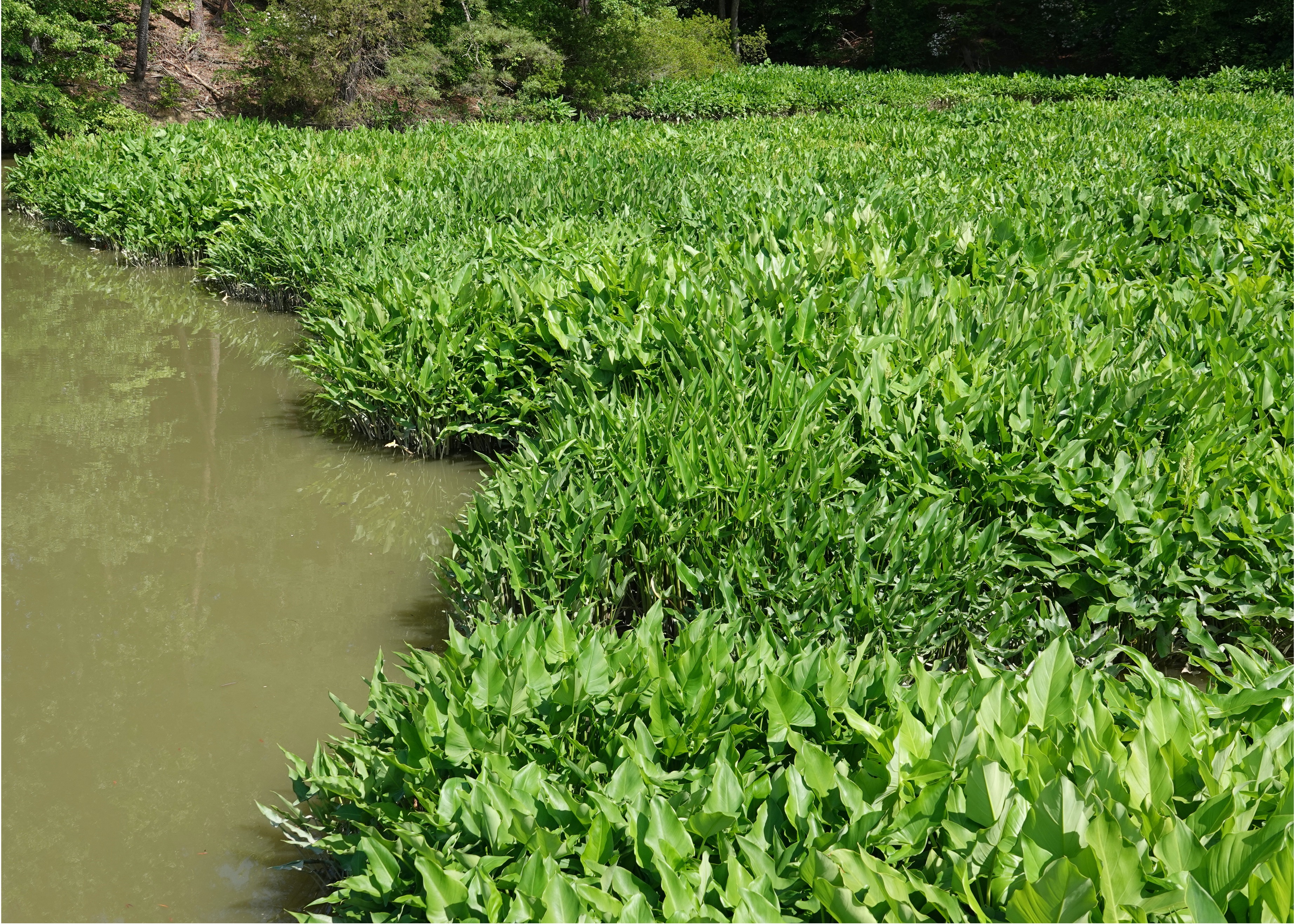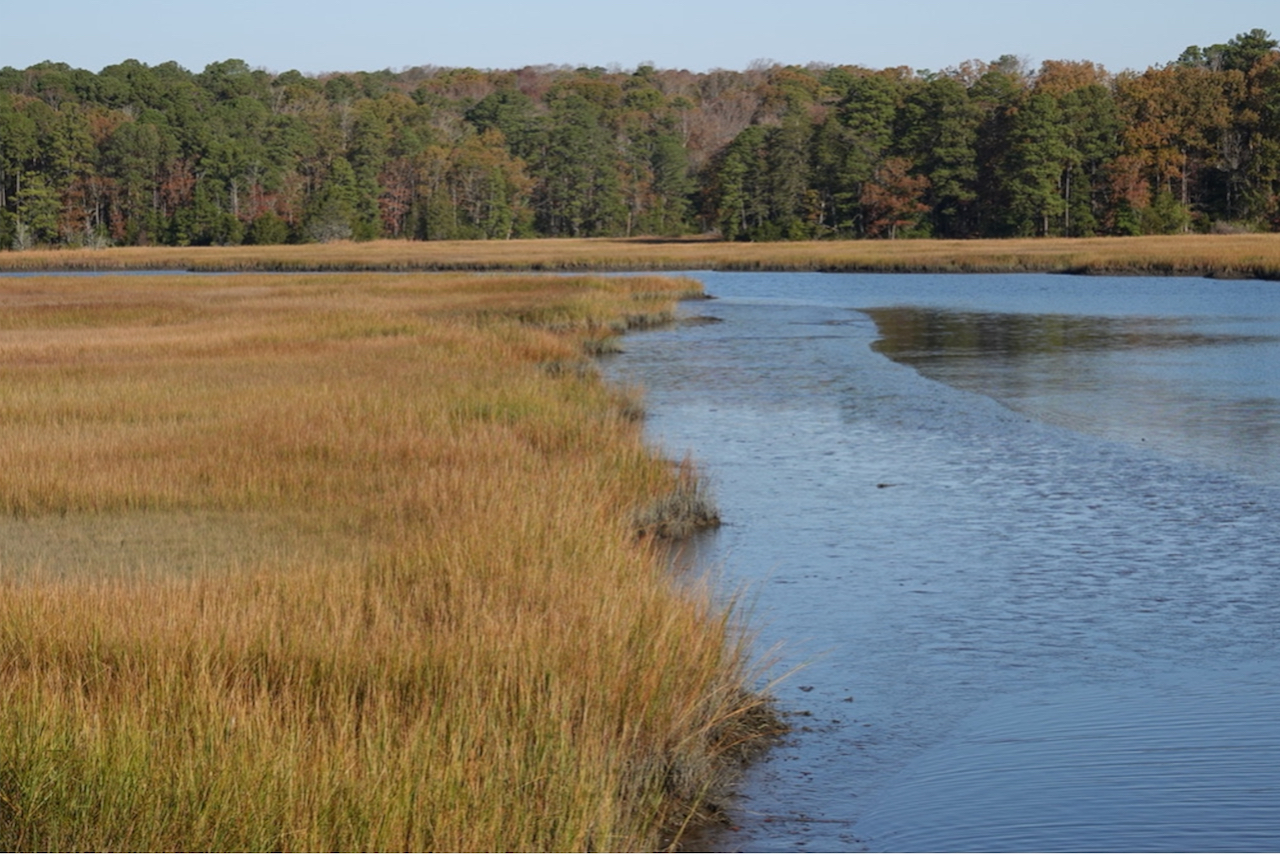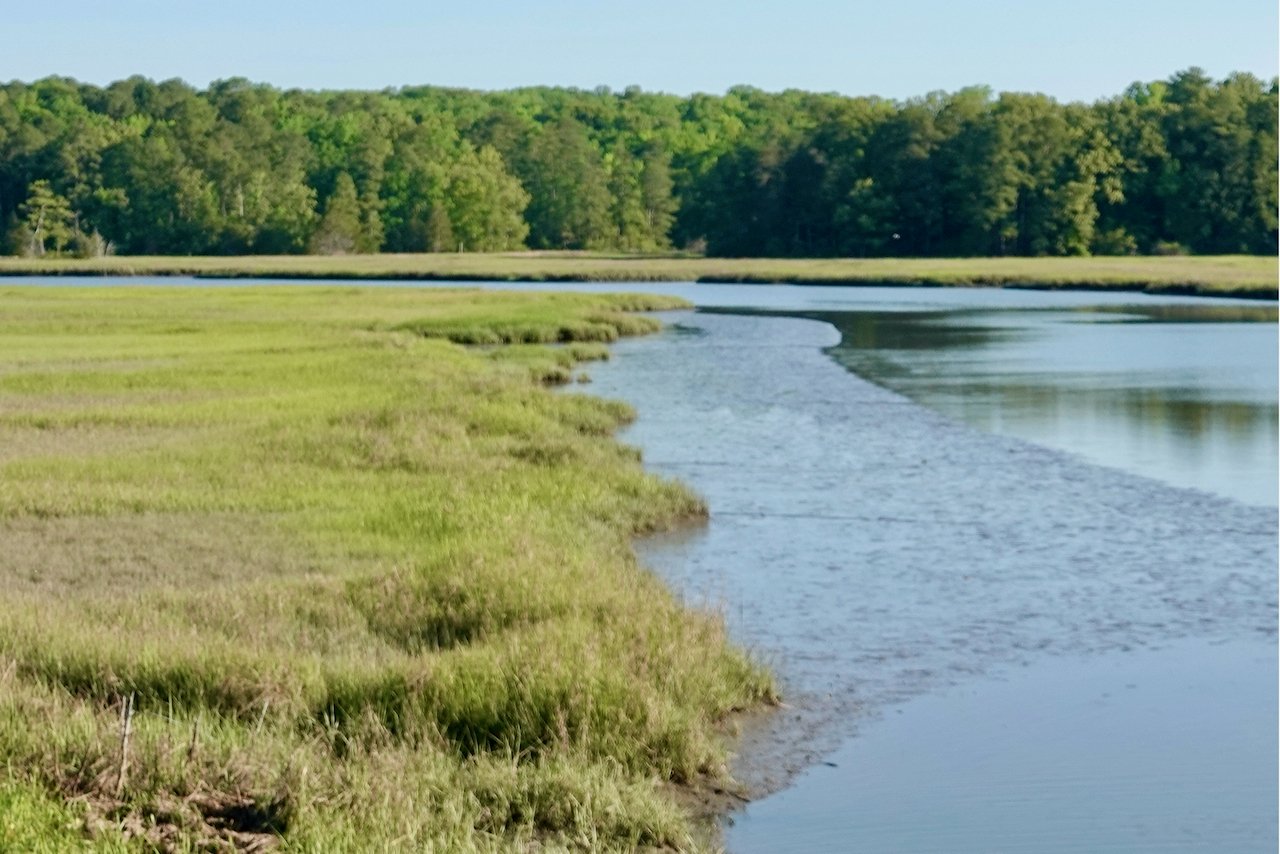Tidal Marsh Seasonality
Although often separated by just a few miles along the salinity gradient of Chesapeake Bay tributaries, tidal freshwater and saltwater marshes differ markedly in their biological, chemical, and physical attributes. One of the most visible differences is in their wintertime visage. Unlike Spartina and most other saltmarsh plants, which hold onto their leaves through the colder months (bottom photos), freshwater marsh plants such as arrow arum tend to die back and decay almost completely, leaving an exposed, seemingly unvegetated flat that bears scant resemblance to its summertime lushness (upper photos).
Don't see an image? Try reloading your browser window.
Tidal Freshwater Marsh


Drag the slider to view the dramatic transition between a tidal freshwater marsh during winter (left panel) and summer (right panel).
Tidal Saltmarsh


Chesapeake Bay saltmarshes—comprised mainly of saltmarsh cordgrass (Spartina alterniflora)—retain their above-ground growth through the winter months. Drag the slider to view the transition between a tidal saltmarsh during winter (left panel) and summer (right panel).

